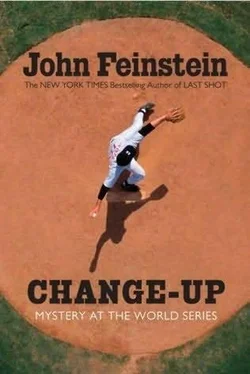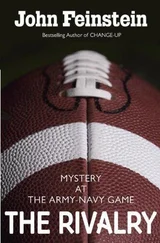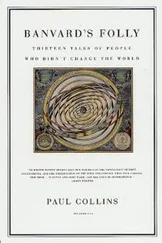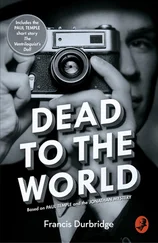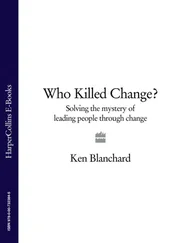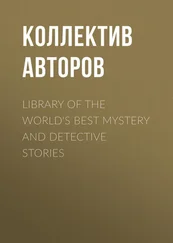“Is Janice around?”
She shook her head again. “She has the early lunch today.” She looked at the wall clock. “She should be back in a while. You can ask her then.”
“Thanks.”
If Mabel had any interest in why two men would show up on the same morning looking for the file on a twelve-year-old fatal-accident case, she didn’t show it. She pointed Stevie to the door that led to the adjoining room.
“If you want coffee or a soda, there’s machines down the hall,” she said.
He thanked her again. He felt the urge to drink some coffee, but he was already amped up enough. Clearly, there was something here-and someone else was a couple of hours ahead of him on the trail. He had work to do. And he needed to do it fast.
13: BACK IN TROUBLE… AGAIN
MABEL HAD BEEN RIGHT about the fact that there wasn’t much to the file. Stevie read quickly through the basics: The accident had taken place on August 13, 1997, shortly after midnight. The first officer to respond to the scene had been James T Hatley and, Stevie gathered, he had written the report. He wrote down Hatley’s name and badge number.
According to the report, the car had been traveling east on state road 260 when the driver “apparently lost control,” Hatley had written, “and swerved into a tree on the right side of the road.” From what Stevie could glean, the car had slammed pretty much head-on into the tree.
Hatley’s description of what the car looked like when he arrived was pretty gruesome. Stevie skipped quickly over those details until he got to the part where Hatley reported on the condition of the two people in the accident: “Both parties were out of the car when I arrived. A. Doyle was clearly DOS”-Stevie knew from TV that meant dead on the scene-“and a call was put out for EMS. N. Doyle had been thrown out of car and was conscious and reported pain in his rib cage and shoulder and had cuts and bruises on his face and arms. He was interviewed briefly at the scene before EMS arrived. He reported swerving to avoid an animal and losing control of the car. He said he did not know how fast the car was going when he skidded. The posted speed limit is 35 mph.”
Hatley went on to describe the arrival of the EMS unit and their confirmation that Analise Doyle was dead. Based on what Hatley had written about the damage to the car, it was amazing that Norbert had survived at all, let alone with such minor injuries. Later in the report Hatley detailed his conversation at the hospital with Norbert Doyle:
Mr. Doyle had been sedated after his wife’s death at the scene. He suffered two broken ribs and a separated collarbone, but his other injuries were minor. He repeated his story from the scene about avoiding an animal and skidding. He asked after his children, twins, two years old, who were home with a babysitter.
An officer was dispatched to the home, and a Ms. Erin James reported that both children were asleep in bed and said her parents had come to the house to help her and that they would look after the children until N. Doyle’s release from the hospital.
Hatley didn’t say how Erin James’s parents knew that she needed help, but Stevie guessed news of a fatal car accident traveled pretty fast in Lynchburg. Later in the report Hatley noted that Norbert Doyle was a “summer resident” who pitched for the Lynchburg Hillcats. There were, according to Hatley, no witnesses to the accident.
Stevie read and reread the report three times. There was, as Mabel had already explained to him, no second car, and also no mention of a drunk driver. He looked at his notes. There really wasn’t much to go on. Maybe, he thought, he could find James Hatley and ask him if he had any other memories of that night. There were, it seemed to Stevie, holes in the report, most notably Hatley’s acceptance of Doyle’s story that he had swerved to miss an animal. Stevie had watched enough TV to know that in a one-car accident the police would at least consider the possibility that the driver had been drinking. And yet there was no mention of a sobriety test of any kind.
He looked at the clock. It was already past noon. He needed to call Kelleher. He closed the file and walked back into the Automobile Records office. Mabel was nowhere in sight. Another woman was there talking to the man who had walked in while Stevie was waiting for Mabel to hunt down the file.
When he saw Stevie, he waved a hand at the woman and said, “Okay, Janice, see you later.” He nodded at Stevie and walked out the door.
“All done?” Janice asked.
“Yes,” Stevie said, handing her back the file. “I understand someone was in before me today looking at this.”
Janice nodded. “Uh-huh.”
If she was any more curious than Mabel, she didn’t show it.
“Do you remember what he looked like?”
Janice shrugged. “Dressed in a suit, I remember that. Probably in his thirties. He seemed to think he needed to explain to me why he wanted the file-which he didn’t. Public document, you know. Ask for it, you get it.”
“What did he say about why he wanted it?”
“He said he had a relative who was involved. We get that a fair bit.”
Stevie thanked her and turned to leave. Then he remembered something. “Any chance you know if I might find officer James Hatley over at the police station?”
“No,” Janice answered, which stymied Stevie a little. Then she added, “He retired about two years ago.”
Stevie’s heart sank. Finding Hatley would probably be impossible if he was retired. He probably didn’t even live in Lynchburg anymore.
“If you really need to find him, he’s usually home around now. He tends to fish in the mornings, then go home around lunchtime.”
All wasn’t lost. “Do you know where he lives?” Stevie asked.
“I could tell you how to get there, but I don’t know his address,” she said. “Wait a sec.”
She reached below the counter and pulled out a phone book. She opened it, ran her finger down a page, and said, “Here it is: fourteen Brill’s Lane. It’s no more than ten minutes from here if you’re driving.”
“Could a cabdriver find it?”
“Oh sure, I imagine so,” she said.
Stevie wrote the address in his notebook, thanked her again, and walked back down the steps and out the door of the courthouse. It was a crisp fall day, and Stevie couldn’t help but think it would be a comfortable night for baseball in Washington. He pulled out his phone and dialed Kelleher.
“Where have you been ?” Kelleher asked when he picked up.
“Sorry, I had to turn the phone off in the courthouse.”
“Oh yeah, that figures. So, what have you got?”
Stevie filled him in on what he had learned. Kelleher didn’t interrupt him except to say “Whaa?” when Stevie told him it had been a one-car accident and “Hmm” when he brought up Donald Walsh’s beating him to the file by a couple of hours. When he had finished, Kelleher said, “Well, you’ve got a lot to do, and so do I.”
“What do you mean?”
“Well, first, like you said, you need to go talk to Officer Hatley. There are a lot of unanswered questions in that report.”
“You mean like no sobriety test?”
“Exactly,” Kelleher said. “Guy runs his car into a tree-even if he did swerve for an animal-how fast was he going? No mention of whether he was drinking, no mention of checking the skid marks to determine his speed.”
“I wonder,” Stevie said, “if the drunk driver who killed Norbert’s wife might have been Norbert himself.”
“Might explain why he talks about feeling guilty,” Kelleher said. “What you need to find out from Hatley is why Doyle wasn’t given a sobriety test, and why he didn’t try to find out how fast he was going. You slam your car into a tree hard enough to kill someone on the spot, you were going fast.”
Читать дальше
